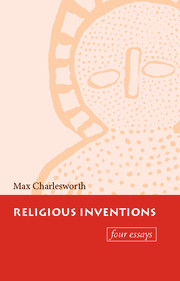2 - The invention of Australian Aboriginal religions
Published online by Cambridge University Press: 04 August 2010
Summary
THE ANTHROPOLOGY OF ANTHROPOLOGY
One of the most interesting trends in contemporary anthropology has been what might be called the anthropology of anthropology. This is concerned with the study of the emergence of anthropology as a discipline in the late nineteenth century, and its development in the twentieth century, as itself a socio-cultural phenomenon that can be investigated in a broadly anthropological way. Claude Lévi-Strauss remarks somewhere that the main difference between western culture and non-western cultures is that ‘we’ have anthropologists and ‘they’ do not, and there is a good deal of point to Lévi-Strauss's irony. It suggests that, just as the anthropologist is concerned to see other ways of life as cultural artefacts or constructs, so also the discipline of anthropology can be seen as a cultural construct or invention: it is an expression of ‘our’ way of life vis-à-vis other non-western ways of life. If the anthropologist is concerned ‘to see culture and its norms – beauty, truth, reality – as artificial arrangements susceptible to detached analysis and comparison with other possible dispositions’, the sub-culture of western anthropology itself can be seen as an artificial arrangement susceptible to detached analysis and comparison with other possible dispositions. The anthropological torch can, so to speak, be turned upon anthropology and anthropologists themselves.
- Type
- Chapter
- Information
- Religious InventionsFour Essays, pp. 51 - 80Publisher: Cambridge University PressPrint publication year: 1997

